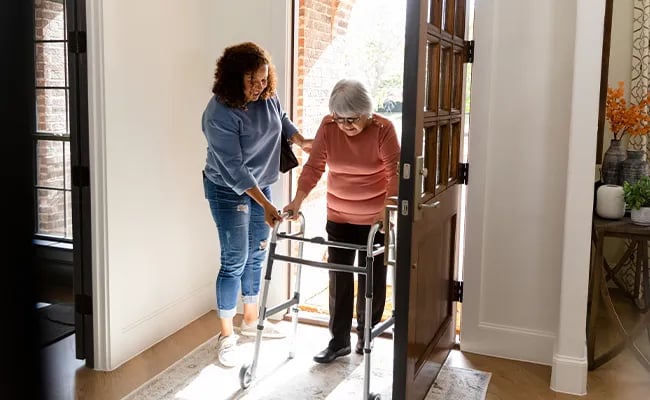Aging Care
Moving a loved one home from the hospital
Transitioning from the clinical setting to the comfort of home requires thoughtful planning, emotional readiness, and practical considerations.

Bringing a loved one home from the hospital is a significant decision marked by a mix of relief, responsibility, and perhaps a touch of apprehension.
In this guide, we'll navigate the essential steps and considerations involved in ensuring a smooth and supportive transition for your loved one's return, promoting their well-being and creating a nurturing environment for recovery.
- Prepare the home: Make any necessary modifications to the home to ensure it is safe and comfortable for the aging loved one. This may include installing grab bars in the bathroom, removing tripping hazards, and rearranging furniture to accommodate mobility aids.
- Arrange for equipment and supplies: Depending on the aging loved one's needs, you may need to arrange for equipment and supplies such as a hospital bed, wheelchair, oxygen, or feeding tube supplies.
- Coordinate with healthcare providers: Coordinate with the hospital and the aging loved one's healthcare providers to ensure a smooth transition from the hospital to the home. This may involve arranging for in-home healthcare services, scheduling follow-up appointments, and obtaining necessary prescriptions and medical equipment.
- Ensure medication management: Make sure that medication management is in place and that the aging loved one understands their medication regimen. This may involve setting up a pill organizer, hiring a medication management service, or coordinating with a pharmacist.
- Ensure transportation: Arrange for transportation to follow-up appointments and ensure that the aging loved one has reliable transportation to run errands or attend social events.
- Establish a support system: Ensure that the aging loved one has a support system in place, such as a caregiver or family member who can provide assistance with daily tasks and offer emotional support.
- Create a communication plan: Establish a communication plan with the aging loved one's healthcare providers to ensure that everyone is on the same page and that any changes in the aging loved one's condition are promptly addressed.
- Educate the aging loved one and caregivers: Educate the aging loved one and any caregivers about their care plan and what to expect during the recovery process.
- Plan for emergencies: Develop a plan for emergencies, including how to contact healthcare providers, when to call 911, and who to contact in case of an emergency.
